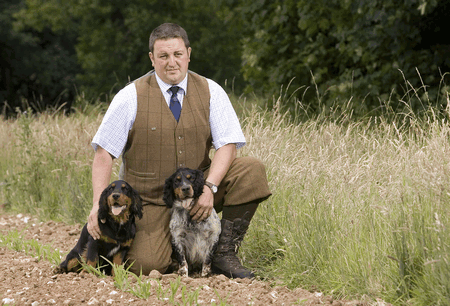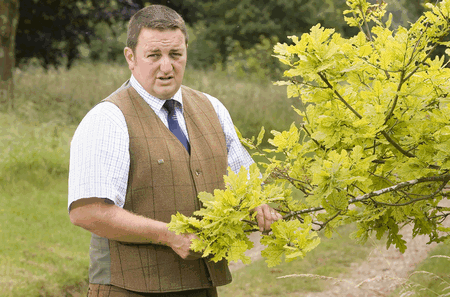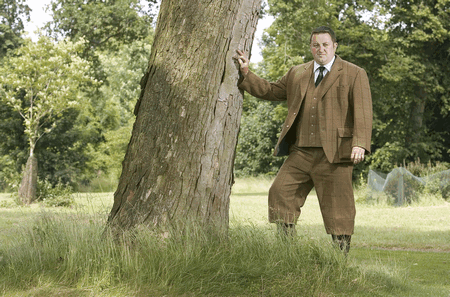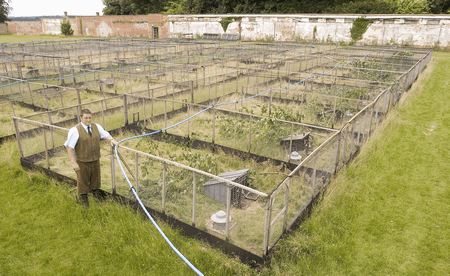Meet another shortlisted gamekeeper – Martin Edwards

Martin Edwards is one of the new breed of keepers who take on much more than the rearing of game.
He works closely with his employers – Nick and Tal Fane – on the day-to-day running of Hurstbourne Park near Whitchurch, Hampshire, where a revitalisation programme has brought great improvements to the shoot, landscape and wildlife.
“Martin was offered a lot of serious jobs before he came here in 2001 and I think he took this one because Nick went to see him, instead of expecting him to come to us,” explains Mrs Fane.
Martin had just successfully completed a five-year project on a Suffolk estate, run jointly by the Game Conservancy Trust and the owners, to turn a reared pheasant shoot into a wild game shoot.
The Fanes, who are both keen and experienced shots, had recently bought Hurstbourne Park, which was rather run down, with little cover for game due to sheep grazing.

At its heart are 200ha (500 acres) of parkland surrounded by mostly arable land, with a softwood plantation to the northern edge. With no water features on the 485ha (1200-acre) estate, a further 100ha (250 acres) along the river Test is rented to provide wild duck shooting and rough days.
“What we wanted to create was the antithesis of a chicken shoot,” says Mr Fane, who was recently listed by The Field as one of Britain’s top shots. “Martin’s passion was for wild birds and we were lucky to find him.”
A lot of planning and planting has gone into getting the habitat right. “I designed and put in place the Countryside Stewardship Scheme on the estate to benefit both the game and other wildlife,” explains Martin.
“With the help of the estate team we have planted 1800m of new hedgerows and put 9m margins of varying grasses around every field to provide nesting, brood rearing and drying out strips.”
Shrubs have been planted to provide cover and roosting for pheasants, while woodland has been thinned to allow in the light and create flushing areas.
An imaginative bit of recycling used chalk, dug out during the creation of cellars for the new main house, as the basis for 900m of free-draining nesting and beetle banks. “These have proved a cracking success for ground-nesting birds and game,” he says.

With 2ha (5 acres) of summer fallow and 10ha (26 acres) of game cover across 14 sites, there is now plenty of holding cover for game and winter food for seed- eating birds. A regular programme of predator control, particularly in the vital months of February to August, gives them all an improved survival rate and hare and barn owl numbers are also up.
To establish the shoot on a semi-wild basis, Martin has combined old and new rearing methods and established a “cocks only” policy for pheasant – to preserve the hens for breeding – on the nine main shoot days. Bags average 150-250 mixed pheasant and French partridge.
Five less formal “marauding days” offer a mixed-species bag. Seven nights of wild duck and geese shooting are held each season and an annual doe cull is carried out in February. Guns are usually friends and family of the owners.
“To put a bit more wild know-how into the stock, I started hatching some of our pheasant eggs under broody hens. I now rear up to 1000 pheasant poults under 60 broody hens,” he says. “This produces very well-feathered birds that are more streetwise than their shed-reared counterparts due to training from the ‘mothers’.” This year he is planning to rear some grey partridge by the same method to try to re-establish them on the estate.
At six weeks, the poults are released to the wood, unpenned but with the broody hens. “The hens hold the poults really well,” says Martin. The release site has four strands of electric fencing round it for predator protection and the young birds soon start to roost. “It’s magic watching the birds on their first night in the woods.”

Additional cock pheasants and French partridge poults are brought in to provide the shooting surplus
Spring and autumn counts show wild brood numbers are increasing annually. “Now I am six years into this we have pheasant hens out on the estate so protective that they fly at you!” says Martin.
Gamekeeping students from Sparsholt College – where Martin studied Wildlife Management – regularly gain experience at Hurstbourne Park. “I would say to anyone: Don’t be quiet about keepering – teach others. I have known keepers die without passing on their knowledge,” says Martin.
He has held a BASC Young Shots day and welcomed local primary-school children to learn about the countryside.
“I like to encourage youngsters to come beating with their parents so they can make up their own minds about shooting,” he says. “We also put on a children’s shoot in the Christmas holidays. To qualify for it they have to do a few days work with me on the estate.”

It all helps build the family atmosphere that his employers, who have three young children, seek for shoot days where everyone – guns, beaters and pickers-up – mix together in the shoot bus and at lunch.
“I can show you a hundred letters saying what beautiful unhurried days have been had, with time to work the dogs, the birds beautifully driven and a great atmosphere with such a friendly team,” says Mr Fane. “Martin plans it so well he makes it seem effortless.”
But the Fanes agree that Martin, who is known for tackling all sorts of jobs on the estate, is more than a gamekeeper. “He is a very important part of our household,” they state.
See the Game Fair 2008 special report page.
